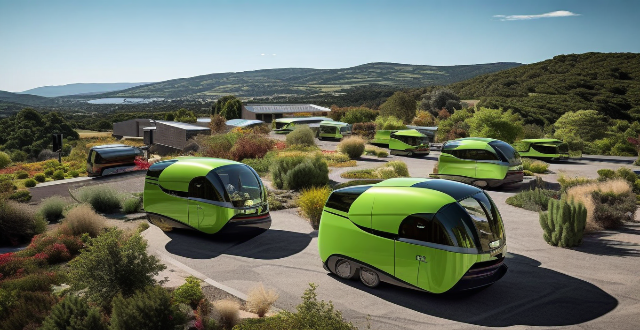Public transportation plays a crucial role in reducing air pollution by providing an alternative to individual car use. It contributes to cleaner air through various ways, including reducing emissions, encouraging sustainable practices, supporting green infrastructure, influencing policy and planning, raising environmental awareness, and facilitating smart growth. By offering efficient, sustainable alternatives to driving, cities can work towards reducing their carbon footprint and improving the health of both their citizens and the environment.

The Role of Public Transportation in Reducing Air Pollution
Public transportation plays a crucial role in reducing air pollution by providing an alternative to individual car use. Here are some ways it contributes to cleaner air:
1. Reducing Emissions
- Fewer Cars on the Road: When people choose public transit over driving, there are fewer cars emitting pollutants like carbon monoxide, nitrogen oxides, and particulate matter.
- Efficient Route Planning: Buses and trains can carry many passengers at once, reducing the total number of vehicle trips needed.
- Lower Emission Vehicles: Public transit vehicles often have stricter emission standards than personal vehicles.
2. Encouraging Sustainable Practices
- Promoting Walking and Cycling: Transit hubs can be designed to encourage short walks or bike rides to connect with other routes, reducing motor vehicle use for short trips.
- Integrated Systems: Combining different modes of transport (like buses, subways, and bicycles) makes it easier for people to use multiple forms of clean transportation.
3. Supporting Green Infrastructure
- Charging Stations for Electric Vehicles: Public transit stations can include charging infrastructure, promoting the use of electric vehicles.
- Solar-Powered Stops: Some transit stops can be equipped with solar panels to power lights and displays, reducing energy consumption from the grid.
4. Influencing Policy and Planning
- Urban Planning: Cities that prioritize public transportation often see less urban sprawl, leading to shorter trip distances and potentially lower emissions.
- Clean Fuels: As public pressure grows, transit agencies may switch to cleaner fuels like biodiesel or hydrogen.
5. Raising Environmental Awareness
- Educational Opportunities: Public transportation provides platforms for educational campaigns about environmental issues and sustainable practices.
- Community Engagement: Transit systems can engage with communities to promote events and initiatives that support environmental causes.
6. Facilitating Smart Growth
- Livability: Areas serviced by good public transit tend to be more walkable and bike-friendly, reducing the need for cars.
- Job Accessibility: Transit can help people access job opportunities without relying on personal vehicles.
Conclusion
Public transportation is not just about moving people; it's a key component in urban planning that can significantly impact air quality. By offering efficient, sustainable alternatives to driving, cities can work towards reducing their carbon footprint and improving the health of both their citizens and the environment.